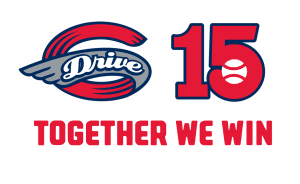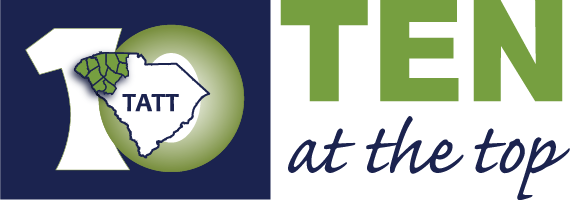
Jul 21, 2020 | Staying on Top, UpstateVibe365

Michael Nail, Associate—Ogletree, Deakins, Nash, Smoak & Stewart, P.C.
Data suggests the potential for a wave of employment litigation springing from the pandemic. At this early stage, it is difficult to fully anticipate all the types of claims that may be brought by employees and how those claims will be handled by courts or administrative agencies. Through June 2020, a review of national court filings reveals numerous employment lawsuits based on COVID-19–related claims.
A survey of South Carolina court filings also reveals a variety of employment-related lawsuits based on COVID-19–related claims that fall into the broad categories of FMLA/FFCRA interference/retaliation, wage and hour violations, retaliation/wrongful discharge, discrimination, and unsafe working conditions.
Thus far, the most common claims relate to safety in the workplace and retaliation. Many of the related claims overlap and allege complaints about reports of unsafe workplaces and adverse action resulting therefrom.
Given that the foregoing summary derives from filings during a timeframe in which most states, including South Carolina, had some version of a “shelter-in-place” or “stay-at-home” order, and many employers were either not operating or only partially operating, it is likely that these types of lawsuits will increase dramatically in the coming months.
Can Employers Utilize Any Liability Shields?
Policymakers have been pushing for immunity legislation at the federal level, but implementation remains uncertain.
No such legislation has been implemented in South Carolina, but legislation has been proposed. On June 24, 2020, the “South Carolina COVID-19 Liability Safe Harbor Act” (“Safe Harbor Act”) was introduced in the House of Representatives (H. 5527).
The Safe Harbor Act would provide liability protections for a broad class of businesses and government entities (acting in their capacities as employers and otherwise) (“Covered Entity”) that reasonably adhere to “Public Health Guidance” (as defined in the Safe Harbor Act) in effect at the time of the alleged conduct giving rise to a “Coronavirus Claim.” The Safe Harbor Act defines “Coronavirus Claim” as any cause of action that is related to any actual, alleged, or feared exposure to or contraction of Coronavirus from:
- the premises of a Covered Entity;
- the operations, products, or services provided on or off premises of a Covered Entity;
- the acts or omissions of a Covered Individual or Covered Entity, to include the delay or withholding of medical care; and
- efforts to prevent or delay the spread of the Coronavirus, to include making precautionary equipment or supplies such as personal protective equipment.
The safe harbor would not apply if a claimant were to prove by clear and convincing evidence that the Covered Entity or Covered Individual caused the injury or damage (1) through knowingly reckless, willful, or intentional misconduct; or (2) by failing to make any attempt to adhere to public health guidance. Observers expect the General Assembly to revisit the proposed law in mid-September.
Other states already have implemented temporary liability protections for employers, and legislation is pending in others. While these laws vary from state to state, the common theme is to protect employers from tort liability if they comply with applicable safety guidance.
Does the Workers’ Compensation Bar Apply?
Some states have enacted special COVID-19 workers’ compensation legislation or are considering COVID-19 amendments to their workers’ compensation laws. The new laws in many states would create a presumption that employees who contracted COVID-19 did so at work. These changes essentially shift the burden of liability from businesses to the state or create a hybrid solution.
South Carolina has similar legislation pending (HB 5482) in response to the pandemic that would create a workers’ compensation presumption. Specifically, South Carolina’s law would create an easier path for first responders, health care providers and correctional officers who contract COVID-19 to obtain workers’ compensation benefits.
Should the new law become enacted in its current form, it would almost certainly ensure that a tort claim asserted by a covered employee for exposure to COVID-19 at work would be barred by the workers’ compensation exclusivity doctrine, absent an exception to the bar, such as a deliberate intent to harm.

Jul 15, 2020 | Staying on Top, UpstateVibe365

Earl Gregorich, Area Manager & Business Consultant, Greenville Area Small Business Development Centers
Anyone who has worked with small business owners and entrepreneurs has witnessed the good, bad and ugly side of how they track the financial aspects of their operations. Unfortunately, only a small percentage of business owners actually keep financial records and review them to make proactive decisions about the future of their business. The rest are somewhere between overly-reliant-on-their-bookkeeper and just-winging-it. The current COVID-19 disaster has, unfortunately, brought poor financial literacy to the forefront. So, how do we fix this? Well, it takes a concerted effort by all of us to raise the bar and set higher expectations for clients we are working with.
Take a moment and think: before you begin working with a client, do you ask them to see their financials? If you said yes, great! If you said no, ask yourself, why not? It’s pretty safe to say that no matter what consulting role you are in (marketing, HR, technology, soft skills, etc.), the advice you are about to give will have a financial impact on the business in front of you. The business owner or entrepreneur is going to make some kind of adjustment or decision based on your advice, and those will have costs associated with them and hopefully result in a positive impact on their profits.
If we aren’t asking to see the financials before doling out advice, how do we know if the client can afford our suggestion? What short/long-term impact will it have on their cash flow? Will the resulting profits be worth the investment required? Indeed, our advice may be sound, but if it does not fit the financial position of the business, at best, the advice will be ignored, and at worst, the resulting change could do damage to a business we are trying to help.
As a group, we should be working toward a standard practice of requiring entrepreneurs and business owners to provide an income statement, balance sheet, 18-month cash flow projection and a break-even analysis as we start our relationship and then periodically benchmark those numbers throughout our time with them. True, entrepreneurs may not have numbers, but they should have projections. Conversely, business owners may have numbers but may not know how to work with them. Either way, it’s our duty to emphasize the importance the numbers play in our relationship with them and how it can impact the outcomes.
Now before you point out that it’s not our job to be an accountant nor is it our job to help assemble financial statements, let us remember that there are those among us who are equipped and willing to do this work in order to help the larger entrepreneurial community better serve clients. The Small Business Development Centers help entrepreneurs with projections and business owners with financials. Bookkeepers and CPAs offer these services as well, and several lending organizations have limited services in this area also. We should be in the practice of knowing where to send a client to get the numbers straight as we work our own areas of expertise.
In closing, it’s up to us to raise the bar and set higher expectations within our entrepreneurial community. We need to work together, using the resources at hand to improve the chances of small business survival. Many of our clients were not prepared for the tough times surrounding COVID-19, and several could not qualify for disaster funds because they didn’t have an understanding of the numbers or could not produce the data needed to apply. We must do better. Together we can better prepare our entrepreneurs and business owners to become stronger and more financially literate.

Jul 15, 2020 | Staying on Top, UpstateVibe365

Jeff Brown, VP of Marketing and Sponsorships, Greenville Drive
The 15th anniversary season of Drive baseball was set to be our best ever. The events were planned. The promotions were ready. Fluor Field looked as good as ever with recent updates and fan experience enhancements. The Drive staff and the Upstate community was once again ready for a summer of family fun, high-quality entertainment, and as always, great Drive baseball. And then all of a sudden, in early March, everything changed. In the blink of an eye, instead of wearing Drive caps and Drive jerseys and sharing high-fives after a home run, we were all donning masks and staying six feet apart from each other. Nobody knew what the future held, and the best and most loyal fans in the country were left wondering if the Drive would have any kind of season.
Now we know. There will be no baseball this summer at Fluor Field; the Drive’s 15th anniversary season will have to wait until 2021. It goes without saying that the season cancellation is devastating for the Drive staff and the entire Upstate community. But in the end, the health and safety of our fans, players, and staff must always come first.
Importantly, though, even as COVID took command, the Drive continued to help and engage with the community in whatever way we could. We’ve worked with our partners and fans to give back to the community in ways that had a meaningful impact at a time when it was particularly needed. We’ve hosted events to distribute critical PPE equipment to frontline healthcare personnel; distributed food to low-income families; held high school graduations; and creatively found ways to give back to the United Way and Harvest Hope Food Bank. We’ve continued to do everything we can to show the people of the Upstate that we care, that their well-being matters to us, that we want to return the support the community has always shown us…all while we waited to find out if we were going to have any sort of baseball season.
When the decision on our season ultimately came, after a few quick deep breaths, we picked ourselves back up and took to our continuing mission of providing support to our beloved Upstate. Therefore, we remain as committed as ever to the economic vitality of our region and intend to do what we can to keep this a magnificent place to live, work, and raise a family.
 What’s made this such a special place to live is you. The unwavering support of Drive fans to our team and to our community is nothing short of miraculous. You’ve allowed the Drive to become ingrained in the life of the Upstate, you’ve made us Greenville’s front porch, and that’s especially important to us during this difficult time. Your continued support of the Drive is now more important than ever as we maneuver through this unprecedented summer and fall. The Drive will have a 15th season anniversary celebration; it’s just going to happen in 2021. We can’t wait to welcome you, your businesses, your families, your loved ones, and everyone in the community back to Fluor Field as soon as it’s appropriate to do so.
What’s made this such a special place to live is you. The unwavering support of Drive fans to our team and to our community is nothing short of miraculous. You’ve allowed the Drive to become ingrained in the life of the Upstate, you’ve made us Greenville’s front porch, and that’s especially important to us during this difficult time. Your continued support of the Drive is now more important than ever as we maneuver through this unprecedented summer and fall. The Drive will have a 15th season anniversary celebration; it’s just going to happen in 2021. We can’t wait to welcome you, your businesses, your families, your loved ones, and everyone in the community back to Fluor Field as soon as it’s appropriate to do so.
In the meantime, stay safe and healthy. We hope you’ll keep West End Events in mind for your corporate or personal event. After all, Fluor Field is our community’s ideal social distancing venue, and there’s still nothing like being at the ball park, even if there’s no game.
We look forward to 2021 being a celebration, both of our 15 years here in Greenville, and of a return to some sort of normalcy. We appreciate you more than you’ll ever know. And we can’t wait to see you again at the ballpark for Drive baseball come next April.

Jul 8, 2020 | Staying on Top, UpstateVibe365
There are nine towns across the Upstate that have Main Street associations, which exist to encourage economic development as well as historic preservation of downtowns. Those associations, working in tandem with local Chambers of Commerce and their city officials, have worked hard to support their downtown businesses during the shutdown and as things have begun to open up. We asked them to tell us about some specific ways that their businesses have engaged the community, supported each other, and have been successful in spite of the tremendous hardship of the pandemic.
We shared stories from Central, Walhalla, Laurens, and Greenwood in an earlier post; here are responses from four other towns.

Tony Brown, Envision Williamston
Tony Brown, Williamston
Like towns and municipalities across the county, Williamston has had to adjust during the outbreak of COVID-19. Despite all of this, we have had some success with businesses opening and moving forward. One new business is the OGP Smoke shop. This retailer sells tobacco products, vape products, cigars, and essential oils. They opened up during the height of the shut down during April 2020. The owners say they have thrived and are building a loyal customer base. Another business that has opened is Home & Heart Design and Boutique. This business sells one-of-a-kind crafts for the home and boutique clothing. Opening on May 30th, this business has a loyal following and is primed to be successful.
The greatest success story comes from a business that opened up just days before the economy shut down. Bee Clean LLC opened The Hive Car Wash on March 3, 2020. The owner, Remar Rucker, already had his pressure washing business, Bee Clean LLC. Now it has a permanent location. During the shutdown, business was slow. The world was also shifting with the video of the death of George Floyd being seeing in every news cycle. A local cemetery in Powdersville was vandalized in June. Mr. Rucker went out voluntarily, without being asked and for free cleaned all the graffiti off the grave markers with his pressure washing equipment. He did not charge for the service but stated that he did this from the heart. This simple act of kindness has led to a boom in his business—a boom with which he is having difficulty keeping up. Mr. Rucker is a one-man show, but now he is looking at hiring to keep up with the demand for his services.

Adele Alducin, Main Street Clinton
Adele Alducin, Clinton
Main Street Clinton went forward with our postponed date of Rhythm on the Rails this past weekend and it was a huge success. My team and I took precautions by expanding the footprint of our event, double spacing vendors, moving BBQ competitors to a park and adding sanitation stations throughout the event. We also added tables and chairs to our stage area to help with social distancing. We had team members on site cleaning travels and chairs as people moved from place to place. There was signage everywhere reminding people to social distance as well as inspection of food vendors each day.
The community followed the rules and were very appreciative that we held the event.
Shawn Bell, Fountain Inn

Shawn Bell, City Administrator, Fountain Inn
Our Chamber of Commerce held its Second Annual Taste INN: A Community Dinner Down Main Street on May 21st. This event closes Main Street for a community dinner that highlights our restaurants. Each guest went around to each restaurant booth to sample their dish and vote on which one they liked best. We had a DJ to fill the streets with music and is was sponsored by the City of Fountain Inn, SC Representative Mark Willis, and SC Senator Ross Turner.
One of our biggest success stories, unrelated to the pandemic, is the opening of a downtown splash pad at the end of the summer last year. Leadership Golden Strip, which is a joint venture between the Fountain Inn and Simpsonville Chambers of Commerce, raised private funds to construct a splash pad on a city-owned parking lot right in the heart of downtown. A few parking spots had to be removed for it to be installed and the entire parking lot was shut down during construction. Parking is at a premium in downtown Fountain Inn, and a lot of businesses were concerned about losing valuable parking spaces. However, once the splash pad opened, we saw a tremendous increase in visitors to our downtown from people from all over the region who would not normally have been coming to downtown Fountain Inn, especially during the day during the middle of the week.

Drake Scott, Main Street Director, City of Gaffney
Drake Scott, Gaffney
Just like other small towns across the country, Downtown Gaffney was faced with shutdowns due to COVID-19. The Main Street office partnered with the Visitor’s Center in Gaffney and became the city’s information center for closings/altered hours of city businesses.
We worked tirelessly on calling around to all restaurants and businesses that pay hospitality tax to get a list of their new hours, curbside, delivery, and pick-up options. We then created a list on our City website with all of these businesses so that the public knew who was open and how citizens could support their local establishments.
The biggest adjustment that many of our downtown businesses had to make was creating a social media presence where, in some cases, no presence existed before the pandemic. Some of our downtown businesses struggled once the doors were closed because they offered no alternative business strategy other than face-to-face sales. We worked with many business owners to help establish a Facebook business page so they could update their menus, hours, curbside pick-up options, etc., to help keep their businesses operating.
Despite the hardships caused by COVID-19, many of our businesses fought hard to stay open and did not give up. They rallied around each other and worked together to help promote all businesses on Main Street. I am proud of how downtown Gaffney came together during this pandemic and I am especially proud of their resiliency moving forward and adjusting to this “new normal” we are all experiencing today.

Jul 8, 2020 | Staying on Top, UpstateVibe365
Libraries are a great place to get books, movies, magazines, and music, but the services they offer go well beyond reading materials. They also offer free internet service and printing; local historical archives; programs for children, teens, and adults; a place to gather for meetings and classes—and much more.
Rieta Drinkwine, Executive Director of the Union County Libraries, and Susan Myers, Director of Teen Services at Spartanburg County Public Libraries, answered some questions about how their libraries have found ways to continue serving during the pandemic.
Q: What kinds of behinds-the-scenes library functions have been going on during the pandemic?

Rieta Drinkwine, Executive Director, Union County Public Libraries
Rieta: Since we closed our doors in March, much of what we have been doing is now behind-the-scenes. Library staff have continued to provide services remotely by phone, email, and chat. We’re providing access to library materials through no-contact book and activity kit pick-ups, as well as substantially increasing items available electronically. Additionally, we’re now providing daily virtual programs. Some of the most important behind-the-scenes work the library is now doing is working to address immediate and basic needs. One example of these efforts is the newly compiled comprehensive list of resources to support our community during COVID-19, which is accessible on our website. Another example of these efforts is that the team contacted and registered seniors for the Senior Farmers Market Nutrition Program, and with the library’s assistance this year, Union had its highest participation ever. The library has also worked to identify alternative funding options in order to expand access to resources county-wide while the main facility is providing limited services, with the primary focus on expanding internet access.
Susan: It depends on the department. SCPL opened back up on June 3rd, but before that our branch staff and Circulation Department staff took turns going in to all of our locations to empty book drops, quarantine, and process returned items. Some administrative staff still reported in when necessary–like our Director and Assistant Directors, our Human Resources staff, our Finance Department staff, etc. Our Nurse Practitioner was still open. Our Collection Management department was busy adding more ebooks and resources while finding new ways to make them accessible to more people. Our Graphic Designers and Web Services staff kept our website and social media updated. Our Local History Department offered virtual genealogy classes. Adult, Teen, and Children’s Services were busy scrapping our original plans for summer reading and coming up with a new one-size-fits-all reading program, in addition to planning a slate of virtual programs. You’d be surprised how much happens behind the scenes to operate a library system, so those are just some highlights!
Q: What do you see as the biggest impact of the pandemic in terms of some of the social functions of a library, and were you able to find a way to continue to serve those functions in a limited way?
Rieta: The biggest impact of the pandemic on the library is the inability for folks to gather at the library. While we are able to provide support for virtual meetings and programs, including providing activity kits for childcare providers, we miss having people in the library and having kids use our slide! We have been focused on reallocating resources to areas of need and where we can provide services, including virtual programs and addressing basic needs.

Susan Myers, Director of Teen Services, Spartanburg County Public Libraries
Susan: Oh, wow–so much! Libraries are a social place. From a Teen Services standpoint, there’s no way to replace the in-person services and space we offered teens pre-pandemic. So this has caused us to get creative and really utilize social media to stay connected with teens. We have weekly contests for gift cards and books, we perform live reader’s advisory via our Instagram story, we have an SCPL Teens island on Animal Crossing where we host Island Hangouts on Friday afternoons, and we have new virtual teen programs every Wednesday at 2pm. Several other departments who serve a whole spectrum of ages also offer weekly programs. We strive to have something for everyone! In terms of library collections, all of our e-resources (of which there are many!) became overnight superstars because they were accessible when our physical collections weren’t. Even now with the library back open, people might still opt to use our e-resources from the safety of their own home.
Q: What do you miss most from pre-COVID days about life at your library? Will you need to do something creative to bring that thing back?
Rieta: I think we all miss the sound of children using the slide and attending programs in our children’s area! We know how much the kids are ready to be back at the library and expect little delay in them returning once they’re able to.
Susan: Speaking specifically from my role, it’s seeing teens in person! The Teen Hub is so lonely without them. All of our fun things are put away–no button maker, guitar, video game systems, furniture, etc.–so we’re trying to find ways to send fun home with them. Four of our summer programs have what we’re calling Pick Me Ups (while supplies last!). Two author programs have books teens can request, our Digital Escape Room has an optional 360 component that can be enjoyed with a free cardboard virtual reality headset, and teens could request a watercolor art kit for our Watercolor Art program.
What else do you want people to know about what you’re doing at your library?
Reita: We have slowly begun reopening all of our facilities in order to ensure the safety of our team and our patrons. We are currently focused on essential services, including support for students, employment assistance, and access to benefits, and we are continuing to provide all of our remote services as well.
Susan: This has been a challenging time for everyone, but also super interesting because it’s forced us to adapt and learn new skills in a really understanding environment. We’ve been free to experiment because nothing is like it was! We might not get to see our library regulars, but for example–teens who didn’t have transportation to us before can now enjoy library programs from their house. I look forward to figuring out new ways to safely deliver library services to the community. Hopefully some of what we learn and create during this time makes the transition to post-pandemic life!
Upstate Library Hours:
Abbeville: Click here to see hours for all branches
Anderson: Click here for hours as well as COVID-19 information
Cherokee: Gaffney 9-5, Blacksburg 1-5; please wear a mask
Greenville: Hughes Main Library is now open; curbside holds pickup available at other locations
Greenwood: 9:00 a.m.-5:30 p.m., Monday through Friday
Laurens: Still curbside and online only
Oconee: 10:00 a.m.-4:00 p.m., Monday through Friday; please wear a mask
Pickens: Click here to see hours for all branches
Spartanburg: Click here to see hours for all branches as well as other available services by appointment
Union: Click here to see hours for all branches

Jul 1, 2020 | Staying on Top, UpstateVibe365
with Sharon Purvis

Steve Hoffman, President, Skyline Exhibits and Design
Skyline Exhibits and Design is a one-stop shop for trade show exhibit materials, from signage to custom booth design. Like many industries that revolve around a lot of people being in the same place at once, the trade show industry will need to adapt to a post-COVID world, with social distancing, masks, hybrid virtual/in-person meetings, and increased sanitation, among other considerations. Steve Hoffman is the president of Skyline Exhibits and Design in Greenville, and he answered some questions about the future of trade shows.
Q: There are a lot of changes for trade shows being talked about to respond to the pandemic—but are any of them things that might be permanent changes? And could that be a good thing?
If I focus on “changes” as the crux of your question, we need to remember any change can and will impact decisions and actions by any of these four key trade show players: the owner of the show, the producers of the show, the exhibitors, and the attendees. One item that necessarily is a part of everyone’s calculus both now and on a permanent basis is the financial impact of any change. So if something is done on the early side of shows returning that helps one or more of these groups financially without overly hurting one or more of the other groups, that will likely have the greatest impact on permanence.
A few things that are being considered industry-wide include:
- More space: Owners may seek more space for the totality of their event from a venue, which in turn could widen aisles (easier personal distancing) and enable them to provide larger booth spaces so exhibitors can spread out both their staff and the attendees visiting them on the show floor. Initially, while shows are just starting to come back from postponements and cancellations, it may be an easy incentive for the venues and show owners to offer their exhibitors. But, once there is demand from multiple events for the same venue at the same time, that ability to allow one event to spread out has cost implications.
- Flexible scheduling: This could be offered by event management. They could limit exhibitors to alternating shifts in the hall throughout the day or they could limit attendees to certain show hall times. Either approach could cut down on the “mass gathering” effect; however, neither makes it easier for buyers and sellers to connect on the show floor! To the extent stretched hours impact labor costs, those increases likely get passed on to exhibitors.
- Additional health and safety measures: Most shows (and possibly exhibitors) will be careful to offer things like hand sanitation stations; plexiglass dividers; floor spacing decals; lots of signage pertaining to fevers, coughs, and prior exposure; and even in some cases have temperature screening upon entrance to the expo. However, all will also be careful in not owning liability should someone get sick or exposed. The show’s producers, owners and exhibitors will have incurred additional cost for the precautions.
Q: What kinds of virtual enhancements to trade shows might be implemented?
This year’s rush to anything and everything “virtual” is a reaction to the challenge of how a company can introduce products, services and/or ideas in lieu of the usual face-to-face marketing opportunity inherent in a trade show. However, while some aspects of virtual supplements to the live experience may carry over, once the government regulators, individual venues, travel industry, corporate policies, and personal preferences allow for a return to personal interaction, the live experience will return to pre-eminence. There are some virtual initiatives that are growing in usage now that may remain. These include a “Virtual Booth Experience” where a company creates an interactive 3D rendering of their exhibit booth and touchpoints allow for videos, jpegs, pdfs and information capture much as would happen at a live event. Another example is likely to be greater usage of videoconferencing for follow-up meetings. During the current trade show pause, some exhibitors are using customized virtual platforms. Companies still have a need to communicate and many have budget dollars that had been allocated to shows which are now not being spent. A virtual meeting can enable interactive discussions; it can be live or a pre-taped presentation; and it can be a repository for information and updated information on products. It’s the combination of “live via virtual” plus “info on demand” that makes this option a cut above a regular website or landing page. That same combo may prove beneficial for some marketers when coupled with a return to live trade show exhibiting.
Q: How are trade shows different from other mass gatherings, and how will those differences impact trade shows?
Trade shows have always taken place in a controlled environment that exists for the mutual benefit of an exhibitor and an event attendee. Conversely, a majority of other mass gatherings are aimed either at consumers or are created as a result of spontaneous and/or unplanned proximity of people to one another. The owner of a trade show has the opportunity to employ multiple methods for greater control and social distancing. The impact for exhibitors will likely be more prescheduled appointments with a higher level of decision maker. Attendees will enjoy fewer crowds in aisleways and will want to make best use of their time on the exhibit floor due to possible “traffic flow” directives and staggered attendance hours inside the hall.
Q: In terms of your business, what kinds of things can you do with displays to help with the required changes?—for example, booth size, adding sanitizing stations, floor markers, etc.?
Of course any individual exhibit design would have to account for that organization’s needs, but I think responsible exhibit houses will be taking a greater look at what the exhibitor wants the attendees’ experience to be. Anything interactive will require cleaning between individual touches. Meetings, whether private or semi-private, will likely eat up more space; there will likely be fewer tangible items (literature, samples, giveaways) that are provided at the show, which could mean less in-booth storage is needed. Graphic-based QR codes may be an instant replacement for paper literature. Within a booth space, we’ll likely see greater definition of booth staffer areas and partitions at many conference tables. We may see theatre style presenters behind plexi dividers and fewer seats.
As a positive, I think many exhibitors will really focus on their messaging to be sure the critical ideas cut through clutter and are memorable.
Q: Nearly every surface can be used as advertising space—what are your thoughts on masks as branding opportunities?
Most likely, shows that return will offer this as a sponsorship opportunity. Individual companies will likely offer masks as a giveaway. I’d suggest humor if a company is going to sponsor the official masks at a show because COVID-19 has been so universally negative and disruptive I’m not sure I’d want my brand on every attendee’s face linking me to the pandemic.
Q: Plexiglass—is this something you currently use in your displays, or something you’re having to incorporate now?
I would anticipate “plexi” having a greater prominence at live events. We have used it in exhibit designs forever—sometimes as a window; sometimes as a substrate for a graphic standoff; sometimes as part of custom “look but don’t touch” product demonstrations. We’ve used it in walls and for safety railings and I expect all those applications to continue. However, we will see it used inside of exhibits to create personal barriers at booth staffer stations and small meeting areas. Also, much like in retail, we will see it in the show management’s work areas where exhibitors are placing last-minute orders, picking up items preordered, arranging freight, picking up badges, etc.
One unfortunate but likely scenario is supply and demand will push materials costs up. Not only will plexi be used more often within the industry, but with it being used in so many additional retail or public gathering environments, the basic pricing likely will rise. If we see gas prices climb back up, that will be a double whammy as the plastic materials used in plexi likely have some type of oil by-product in them.
Q: What other kinds of creative things are you seeing/doing to incorporate safety and sanitation into trade show displays?
We’ve been developing some ultraviolet light-enabled cleaners so a visitor to a booth can disinfect their cell phone while having a chat with the booth staffer. Certain flooring products we offer are more friendly towards not retaining viral germs. We have lots of different types of sanitation stations that can attach to exhibit walls or tables or be free-standing.
On the marketing side, we’re talking with some clients about virtual applications either in lieu of or in addition to their traditional exhibit plans.







 What’s made this such a special place to live is you. The unwavering support of Drive fans to our team and to our community is nothing short of miraculous. You’ve allowed the Drive to become ingrained in the life of the Upstate, you’ve made us Greenville’s front porch, and that’s especially important to us during this difficult time. Your continued support of the Drive is now more important than ever as we maneuver through this unprecedented summer and fall. The Drive will have a 15th season anniversary celebration; it’s just going to happen in 2021. We can’t wait to welcome you, your businesses, your families, your loved ones, and everyone in the community back to Fluor Field as soon as it’s appropriate to do so.
What’s made this such a special place to live is you. The unwavering support of Drive fans to our team and to our community is nothing short of miraculous. You’ve allowed the Drive to become ingrained in the life of the Upstate, you’ve made us Greenville’s front porch, and that’s especially important to us during this difficult time. Your continued support of the Drive is now more important than ever as we maneuver through this unprecedented summer and fall. The Drive will have a 15th season anniversary celebration; it’s just going to happen in 2021. We can’t wait to welcome you, your businesses, your families, your loved ones, and everyone in the community back to Fluor Field as soon as it’s appropriate to do so.








